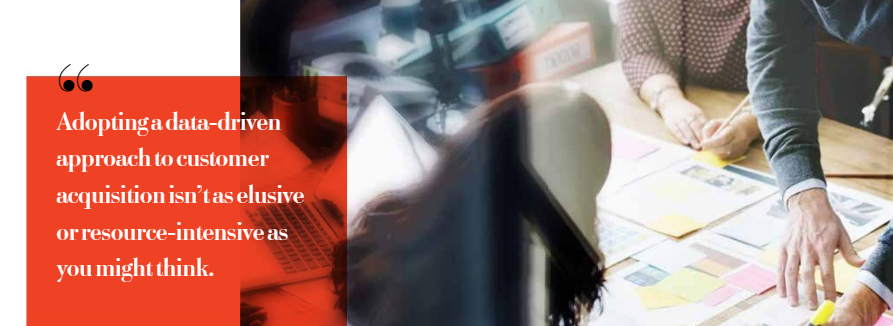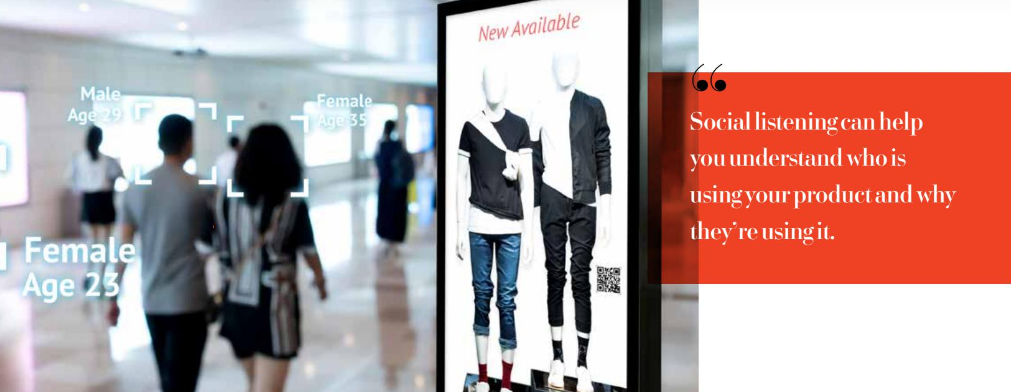How to gather the right e-commerce customer information and make it work for you
We live in a data hungry world. And it’s getting hungrier. According to a 2019 Deloitte report, the volume of data that companies are collecting about their customers is expected to reach 175 zettabytes by 2025. That’s a lot of content. For scale: It would take 3.9 billion of the most powerful iPhone 12s to hold one zettabyte of data.
But all the data on the planet won’t help you if it’s not meaningful data, which often makes the difference between feast and famine in the retail industry. In our first issue of 2021, we told you that meaningful data is one of the tech benchmarks of a strong e-commerce strategy. Data collecting can be intimidating, but adopting a data-driven approach to customer acquisition isn’t as elusive or resource-intensive as you might think. It doesn’t require a huge investment in artificial intelligence or a complete business intelligence department. You simply need a strategy of collecting the right data, analyzing that data, and implementing changes based on that data.

Collecting Data
Many companies realize they have valuable customer data but don’t always have the discipline to sift through it to find what story it’s telling them. The first step toward being more intentional about your data gathering is to differentiate the data you’re collecting—divide it among three buckets: transactional, activity, and external.
- Transactional data. This is data that outlines who bought, when they bought, and how much they bought. Sometimes you collect this information along with demographic data (e.g. age, gender, etc.). But always be thinking about what else you can collect. The more information you gather about who is buying, the easier it is to understand who your customers are and build marketing personas that allow you to target your most profitable groups.
- Activity data. This data is about distributors, prospects and customers and how they interact. It’s the kind of deeper-level data that helps you measure the effectiveness of your marketing and sales efforts. For example, you might track a particular YouTube video or sample your distributors are sharing and how often those shares led directly to a purchase—also track how many shares and samples it took to land the buy. A basic sales and marketing automation system that identifies each prospect and their purchases is all you need to collect activity data.
- External data. This is more unstructured data—like what you get from social media listening (as opposed to monitoring). Social media monitoring is the practice of using often-automated analytics to catch negative comments on social media so that you can respond to, redirect or minimize the effects of a conversation. Social listening is gathering all of the conversations and analyzing them for customer trends, preferences, purchasing triggers, etc.
Social listening can help you understand who is using your product and why they’re using it. This is powerful not just from a compliance standpoint or addressing concerns, but it can help you understand which audiences are really engaging with you. Is it the audience you expected? Is it just distributors? Because if all the chatter is about the business opportunity, you know you need to do something to drive more conversations with and among customers.
Analyzing the Data
Good data analysis will help you drive more customer interactions and engagement. Just make sure you’re drawing relevant conclusions.
For example, if you change ten things at once and you see a lift in sales, who’s to say which one of the ten caused the lift? Try one change at a time and measure all the possible effects it could have had. For example, maybe you want to test a lower price point. Consider using a coupon code first and then tracking overall responses to that code, as well as whether the purchases are coming from existing customers or new customers. Look at whether those new customers are in your typical demographic or if you’ve started to capture a new market segment. Keep an eye on field activity, too—because it could be that you just got the field excited and their increased activity level boosted sales, and it had little or nothing to do with the lower price point.
Anything is possible, but if you don’t capture data on all of these things, you won’t be able to isolate the effect.

It’s also important to take into account market forces that could be contributing to a sales spike. Use your social listening tools to determine if there’s chatter that links the sales surge to something like a new company leader who’s on fire or a phenomenon like the COVID-19 pandemic, which prompted a surge in immune system product sales.
Good analysis, in which you distinguish coincidence from causation, gives you clarity on what kinds of things you want to consistently measure. These will become your key performance indicators.
Implementing Changes
Insights you gain from meaningful data collection may confirm that your current sales and marketing strategies are working. But they might reveal that you have an opportunity to do things differently, which can make you feel like you’ll have to turn an ocean liner around. An organizational or a strategic overhaul based on solid data will make the temporary discomfort worth it. But not all changes are massive. Keep in mind that sometimes it’s a single, small change or a combination of a few small things that can make big differences.
Committing to Quality
Traditional retailers tend to have an advantage over direct selling companies when it comes to data collection and analysis because they are more centralized. It’s more complicated in network marketing because we use distributors to directly interact with prospects, and those interactions aren’t recorded unless we provide our distributors with sales and marketing automation tools that can document those interactions.
We do have the edge over conventional retailers when it comes to relationships with customers, though. If we augment those personal connections with a disciplined, informed approach to understanding and leveraging what we learn about our buyers and prospects, nearly every byte of data we collect will mean something.

PERSONAL DATA FOR A PRICE.
Before you begin capturing information about your prospects and customers, make sure you’re complying with privacy laws. In the United States, these laws vary by state. In Europe, companies must comply with the General Data Protection Regulation.
Even compliant retailers have an uphill climb when it comes to collecting shoppers’ personal information, though. According to another Deloitte study, only 5 percent of consumers trust the retail industry to protect their personal information. Yet, that same study notes that nearly 75 percent of consumers are still willing to share personal data with a retailer in exchange for better pricing, special discounts, or exclusive offers.
Direct sellers can take advantage of this willingness, and it doesn’t have to be complicated. Give consumers a reason to trade data for rewards. It’s common practice to get an email address for a coupon or to reward a subscription or autoship with a small discount. Maybe offer a reward for taking a survey that allows you to collect more information.
This can give you an opportunity to collect data from consumers that will allow you to build more targeted marketing campaigns. It can also be a great opportunity to test various offers and find the one that is most effective for your company.


